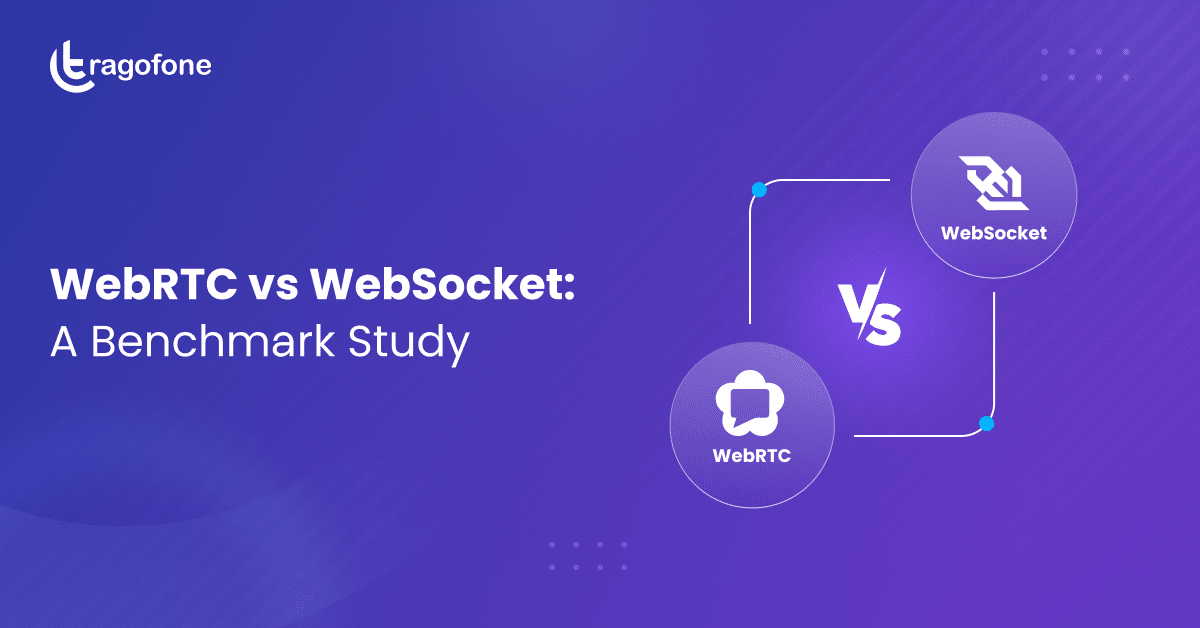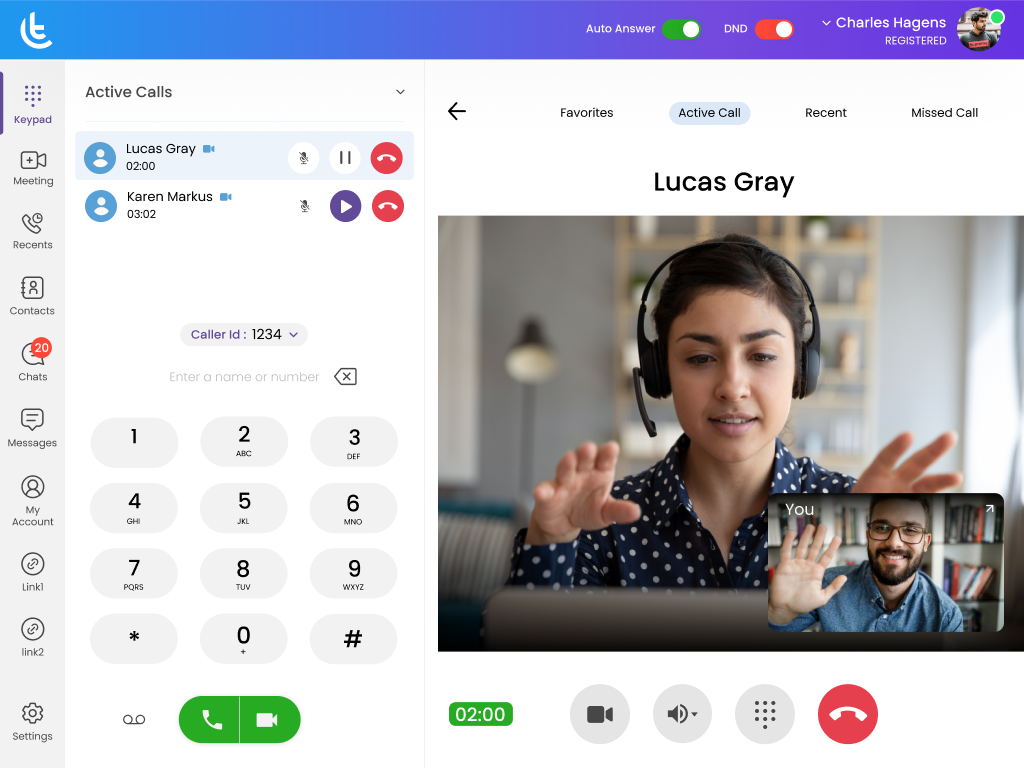
In the digital age, real-time communication has become an indispensable aspect of modern applications. It enables seamless interactions and enhances user experiences across various domains. From video conferencing and live streaming to collaborative environments and real-time data exchange, the demand for efficient and reliable communication technologies has never been higher. Two prominent technologies that have emerged as game-changers in this realm are WebRTC and WebSocket.
WebRTC (Web Real-Time Communication) is a cutting-edge technology that enables real-time communication directly within web browsers, eliminating the need for additional plugins or software installations. It comprises three main components: MediaStream, RTCPeerConnection, and RTCDataChannel, which collectively facilitate real-time audio and video streaming, peer-to-peer connections, and data exchange.
On the other hand, WebSocket is a bidirectional communication protocol that establishes a persistent, full-duplex connection between clients and servers, enabling efficient and low-latency data transmission. Unlike traditional HTTP, which operates on a request-response model, WebSocket allows for continuous and simultaneous data exchange, making it well-suited for real-time applications.
While both WebRTC and WebSocket play crucial roles in enabling real-time communication, their architectures, use cases, and performance characteristics differ. Understanding the strengths and limitations of each technology is crucial for developers and businesses alike when selecting the appropriate solution for their specific needs.
In this blog, we will delve into the nuances of WebRTC vs WebSocket, exploring their key differences, performance characteristics, and use cases. Furthermore, we will examine how Tragofone, a leading provider of WebRTC-based softphone solutions, leverages these technologies to deliver seamless and efficient communication experiences.
Understanding WebRTC
WebRTC enables real-time communication within web browsers through technologies like MediaStream, RTCPeerConnection, and RTCDataChannel. Key advantages are facilitating peer-to-peer connections without intermediaries and providing native support for high-quality audio/video streaming. It also has built-in encryption and authentication for security.
However, WebRTC has limited browser support currently and establishing direct connections across firewalls can be challenging. Its streaming uses significant bandwidth too. This affects WebRTC vs WebSocket latency, as WebRTC’s peer-to-peer architecture can result in higher latency than WebSocket’s server-based model. Still, WebRTC is powerful for real-time communication and sees growing adoption.
Understanding WebSocket
WebSocket enables real-time, bidirectional communication between clients and servers through a persistent connection. This allows continuous, efficient data exchange in both directions.
Its client-server architecture establishes persistent connections via handshakes. This enables low-latency, real-time communication without repeated client requests.
In WebRTC vs WebSocket latency, WebSocket exhibits lower latency due to its server-based architecture. This makes it suitable for real-time chat and collaborative apps requiring quick data exchange. It also has wide browser support. However, WebSocket is more complex to develop than HTTP. Proper security measures are also needed.
While different, WebSocket and WebRTC can complement each other. WebSocket can enable signaling in WebRTC apps for seamless real-time communication.
[vc_row row_width=”” nav_skin=”light” consent_include=”include” el_design=””][vc_column css_animation=””][vc_content_block block=”95586″][/vc_column][/vc_row]
Key Differences between WebRTC and WebSocket
| Aspect |
WebRTC |
WebSocket |
| Architecture |
Real-time communication technology |
Bidirectional communication protocol |
| Use Cases |
Video conferencing, peer-to-peer communication |
Real-time chat, collaborative environments |
| Latency |
Relatively higher latency due to peer-to-peer architecture (webRTC vs WebSocket latency) |
Lower latency due to server-based architecture |
| Video Streaming Support |
Native support for real-time video streaming |
Primarily focused on data communication |
| Signaling Requirements |
Requires signaling server for session establishment |
Does not require explicit signaling |
| Firewall Traversal |
Incorporates NAT traversal techniques |
May require additional configuration for NAT traversal |
| Scalability |
Limited scalability due to peer-to-peer nature |
Highly scalable with server-based architecture |
| Complexity |
Can be complex to implement and manage |
Relatively simpler implementation and management |
| Bandwidth Usage |
Efficient bandwidth utilization for media streaming |
Minimal overhead for data communication |
| Security |
Implements encryption and authentication to protect data transmission |
Implements secure WebSocket connections with SSL/TLS encryption |
In the WebRTC vs WebSocket example comparison, WebRTC is often used for video conferencing and peer-to-peer communication applications, while WebSocket is commonly employed in real-time chat applications and collaborative environments that require bidirectional data exchange.
When it comes to WebRTC vs WebSocket performance, WebSocket generally exhibits lower latency due to its server-based architecture, making it more suitable for applications that require real-time data exchange with minimal delay. On the other hand, WebRTC is optimized for efficient bandwidth utilization and native support for real-time video streaming, making it the preferred choice for video conferencing and media streaming applications.
[vc_row row_width=”” nav_skin=”light” consent_include=”include” el_design=””][vc_column css_animation=””][vc_content_block block=”95596″][/vc_column][/vc_row]
When to Use WebRTC
WebRTC (Web Real-Time Communication) is an excellent choice for developers building applications that require real-time communication and streaming capabilities. You can group WebRTC applications into four broad categories:
- Conversational voice and video: This is the most popular implementation of WebRTC. Applications that need the ability for people to communicate with others in real-time and in a conversational manner, such as video conferencing platforms, VoIP applications, and peer-to-peer communication systems, often end up using WebRTC.
- Live streaming: While WebRTC may not be the most popular choice for streaming, it is one of the best technologies available for low-latency live streaming. If you need to stream something to one or more users while maintaining really low latency to enhance interactivity, as in cloud gaming, live gambling, or webinars, then WebRTC is the most efficient technology.
- Data transfer: With WebRTC, you can not only send voice and video but also transfer arbitrary data. This can be used for sharing large files between machines with minimal server space requirements or creating a BitTorrent-like experience within a video conferencing or collaborative platform.
- Privacy-focused applications: Since WebRTC runs directly between browsers, it is sometimes used to enhance privacy by not sending the media or data via servers at all, thereby reducing the risk of data interception or potential security breaches.
In the WebRTC vs WebSocket example comparison, WebRTC applications like Tragofone shine in applications that require high-quality audio and video streaming, such as video conferencing platforms and live streaming services. When considering WebRTC vs WebSocket performance and latency, WebRTC’s peer-to-peer architecture can sometimes result in higher latency compared to server-based solutions like WebSocket, but it offers efficient bandwidth utilization for media streaming applications.
Use Cases for WebSocket
WebSocket is well-suited for various implementations that require real-time, bidirectional communication. Here are some scenarios where WebSocket can be leveraged:
-
Real-time chat applications
-
- Chat applications require instant messaging where users can send or receive messages in real-time.
-
- WebSocket enables this instant messaging capability, making it widely used in chat apps.
-
Collaborative environments
-
- Collaborative applications, such as collaborative document editing and project management tools, require real-time collaboration features.
-
- WebSocket’s full-duplex communication allows multiple users to simultaneously work on the same document or project, facilitating seamless collaboration.
-
- When considering WebRTC vs WebSocket performance and latency, WebSocket’s server-based architecture offers lower latency, making it suitable for collaborative environments.
-
Applications requiring bidirectional communication
-
- Applications like financial trading platforms, real-time dashboards, and monitoring systems require continuous and simultaneous data exchange between clients and servers.
-
- WebSocket’s bidirectional nature enables efficient bidirectional communication, ensuring that data is transmitted seamlessly in both directions.
In a WebRTC vs WebSocket example scenario where low-latency data exchange is crucial, WebSocket may be the preferred choice over WebRTC’s peer-to-peer architecture.
While WebSocket excels in these use cases, it is worth noting that WebSocket and WebRTC can often be used together to enhance communication features in web applications. For instance, in a WebRTC vs WebSocket example scenario, WebSocket can be used for signaling in WebRTC-based applications, enabling smooth and seamless real-time communication between peers.
[vc_row row_width=”” nav_skin=”light” consent_include=”include” el_design=””][vc_column css_animation=””][vc_content_block block=”95591″][/vc_column][/vc_row]
Using WebRTC and WebSocket Together
While WebRTC enables real-time communication between browsers, it lacks built-in standard signaling features. Signaling is the vital process that involves exchanging information between peers, such as media metadata, network data, and session control messages. For users to experience smooth and seamless video calls, chats, and other real-time communication features, a server is required to coordinate the communication process among the devices.
Developers often leverage the WebSocket protocol to handle the signaling process in WebRTC-based applications. WebSocket’s efficient signaling mechanism and bidirectional communication capabilities make it well-suited for this task. In a WebRTC vs WebSocket example scenario, WebSocket can be used to facilitate the exchange of crucial signaling information between peers in a WebRTC application.
Advantages of using WebSocket for WebRTC signaling:
- WebSocket’s full-duplex communication ensures seamless and real-time exchange of signaling data between peers.
- Its low-latency nature makes it suitable for applications that require real-time communication, addressing concerns around WebRTC vs WebSocket latency.
- WebSocket’s server-based architecture simplifies the signaling process, reducing the complexity associated with WebRTC’s peer-to-peer architecture.
Examples of applications using WebRTC and WebSocket together:
- Video conferencing platforms: WebRTC is used for real-time audio and video communication, while WebSocket handles signaling, enabling smooth and efficient video conferencing experiences.
- Collaborative whiteboarding applications: WebRTC facilitates real-time audio and video collaboration, while WebSocket enables real-time data exchange for collaborative whiteboarding and annotation features.
- Real-time chat applications: While WebRTC can be used for voice and video chat, WebSocket is often employed for real-time text messaging and signaling purposes.
In the WebRTC vs WebSocket performance comparison, the combination of WebRTC and WebSocket can provide the best of both worlds – high-quality audio and video streaming capabilities from WebRTC, coupled with the low-latency and efficient signaling mechanisms of WebSocket. This powerful combination enables developers to build robust and feature-rich real-time communication applications.
Tragofone’s WebRTC-based softphone app

-
Features and capabilities
- Tragofone offers a powerful, custom-built, white-label VoIP softphone app that leverages the capabilities of WebRTC technology.
- The app supports high-quality audio and video communication, secure and reliable connections, and a scalable and flexible architecture.
- It is available for multiple platforms, including Android, iOS, Mac, Windows, and Linux.
-
Integration with existing systems
- Tragofone’s WebRTC softphone app can seamlessly integrate with various existing systems, such as Soft Switches, IP PBX systems, Dial Center solutions, SIP Gateways, and VoIP service providers.
- This integration capability ensures that businesses can enhance their existing communication infrastructure without the need for significant infrastructural changes.
-
White-labeling options
- The white-labeling feature enables businesses to use their own branding, logos, and corporate identity within the app, providing a consistent and branded experience for their customers and employees.
[vc_row row_width=”” nav_skin=”light” consent_include=”include” el_design=””][vc_column css_animation=””][vc_content_block block=”95586″][/vc_column][/vc_row]
Tragofone’s use of WebSocket for signaling
While WebRTC facilitates real-time video conferencing and streaming features, it lacks built-in standard signaling capabilities. WebSocket’s bidirectional communication capabilities enable seamless signaling, facilitating the exchange of important information between peers, such as media metadata, network data, and session control messages.
By combining the strengths of WebRTC and WebSocket, Tragofone enables robust real-time communication features within its softphone app.This integration allows for smooth and seamless video conferencing, VoIP calls, and real-time collaboration, leveraging the low-latency and bidirectional capabilities of WebSocket for signaling.
Tragofone’s innovative approach to integrating WebRTC and WebSocket ensures that businesses can benefit from the best of both worlds – high-quality audio and video communication, coupled with efficient signaling and real-time data exchange.
Unlock the full potential of real-time communication and elevate your organization’s performance with Tragofone’s cutting-edge solutions. Avail a free trial or request a demo today to learn more about how we can empower your business to thrive in the digital age.